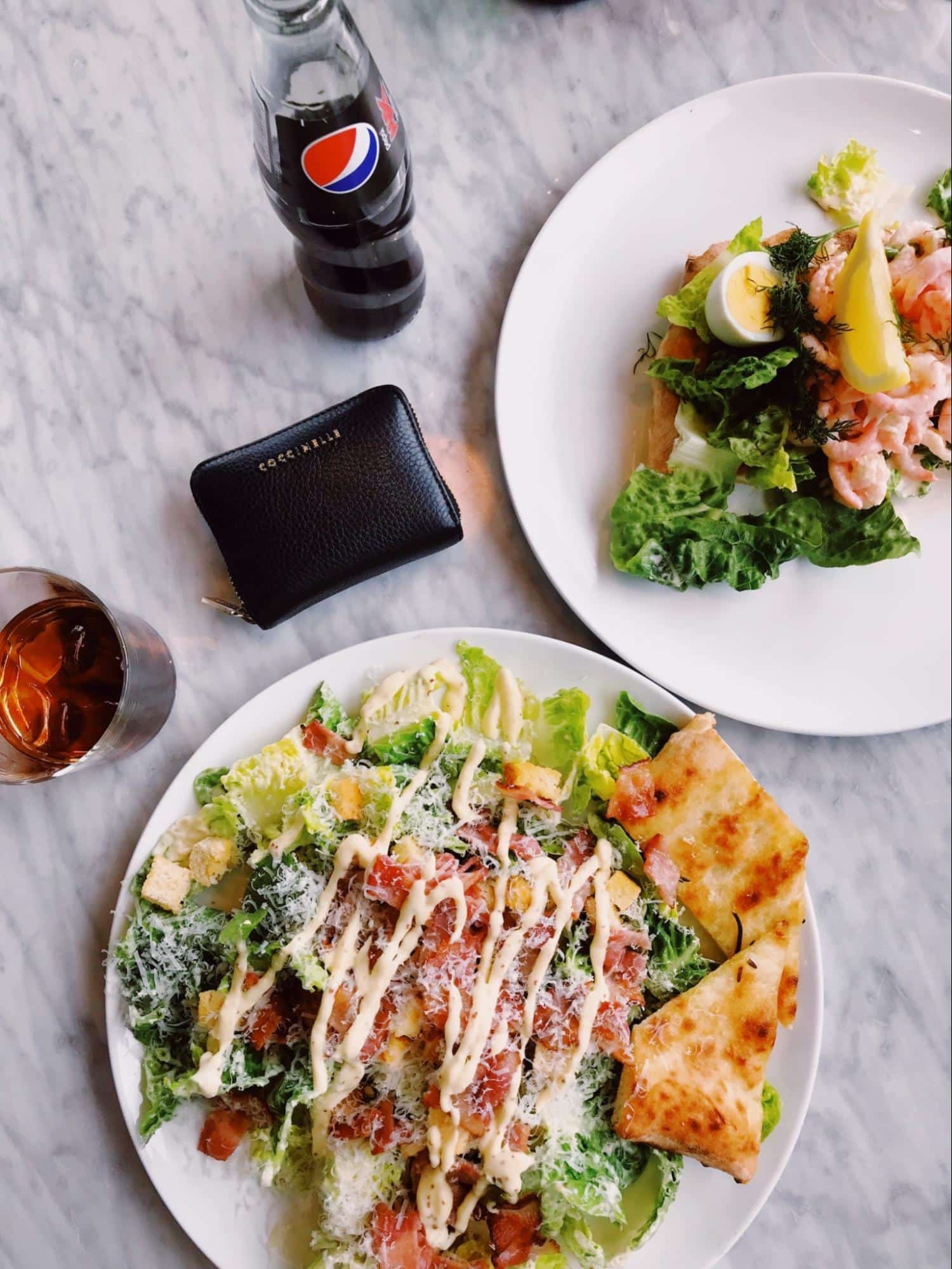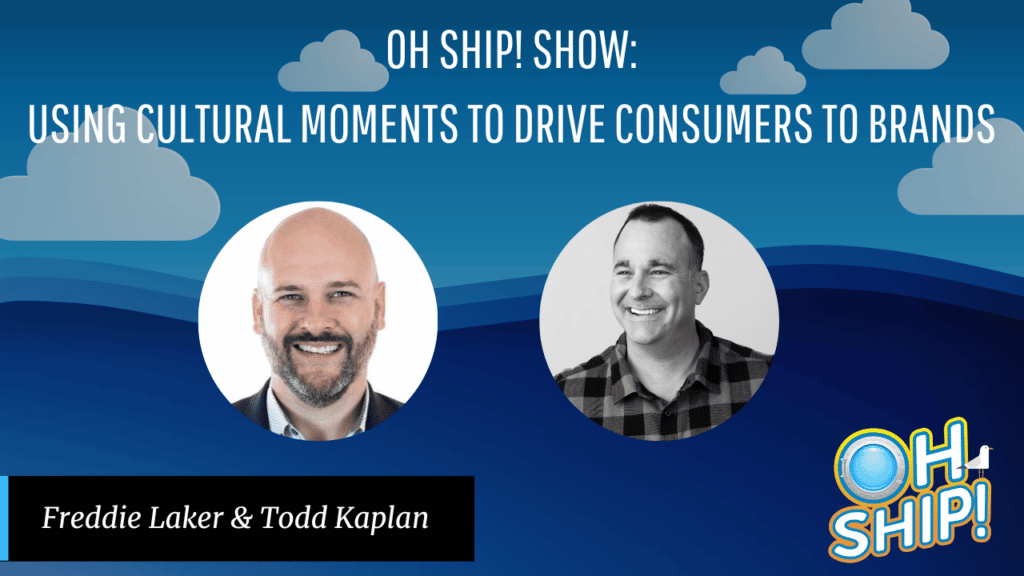Learn how real brand loyalty is built by connecting on cultural touchstones.

Todd Kaplan has worked with Pepsi’s enormous variety of global brands, and he has even been named one of Business Insider’s top 25 most innovative CMOs in the world. All of his numerous roles with Pepsi have been very different, from helping the long-storied brand reconnect with culture to building up the Bubbly brand from scratch.
In a conversation with Freddie, he discussed leveraging cultural moments to draw people to a brand rather than chasing them down with ads. As he shared key insights from his career, they discussed the importance of cultural lead vs. consumer lead marketing.
Connecting through culture
Culture is central to Todd’s work, as it shapes how brands are perceived in the world, he asserts.
This year, he worked on the campaign “Better with Pepsi,” for which they won gold, silver, and bronze lions at Cannes. The theme is, “We’re not on the menu, but we’re always in the picture.”
“The majority of the work that wins isn’t an ad,” he says. “It’s usually an idea, or something a little bit more holistic than just a TV commercial.”
They put the “Better with Pepsi” idea in front of restaurants on billboards, as well as on social media. “The thing just went bananas,” he says. “It was a whole lot of fun, and really just a great way, again, to celebrate a product truth about our brand, which is that burgers taste great with Pepsi, and also a cultural truth around the fact that these brands hadn’t really enjoyed our product with theirs as well.”
A lot of ads don’t really land because they come across as marketing material, he emphasizes. “Something that resonates in culture is something that you connect with.” For instance, Pepsi’s halftime show with Dr. Dre, Snoop Dogg, and Eminem was a true cultural moment.
Beginning by listening to culture

Todd has a philosophy that he uses with his team: “Being culture-in vs. brand-out,” he says. The premise is that a lot of marketers have blinders on. They’re so focused on a list of rational steps to build out that they completely miss how to truly connect.
“We really start our process by listening to culture—what’s happening out there—and finding little ways that we can connect,” he says. The Pepsi campaign is a great example of this. “There’s this cultural truth out there that every burger chain in all big three pour Coca Cola. And then there’s this product truth that really competes with it: that we taste better. And so that’s where we start the tension in the brief,” he says. Instead of just saying, “Hey everyone, Pepsi tastes better, so go try it,” they find a more impactful way to reach them.
Can seasoned advertisers learn to think in this way?
“You’ve got to break stuff to do it,” Todd says. “The age-old agency model, I think as we all know, needs to evolve significantly.”
Why? When a brand chases consumers, bombarding them with advertising or securing temporary loyalty through incentives, they’re always prone to leaving. Offering perks like travel points is a transactional approach. “It’s almost like bought loyalty,” Todd says. Using cultural moments to draw in consumers can result in a much more loyal customer base.
Changing the process to change the game

By transforming the traditional idea development process, brands can create something that truly resonates, asserts Todd.
Embracing two-way dialogue with consumers
Todd hates the word “advertising.” Instead, he’s trying to create moments that resonate.
In traditional advertising, a brand chases consumers through ads they don’t really want to watch. During a TV show, big companies would interrupt them with a product promotion. This was really a one-way street. Today, of course, people have more choice over what media to consume and can skip ahead.
Moreover, when confronted with ads, consumers aren’t really engaging with them, Todd asserts. Think about how much time you spend streaming, texting, reading articles, or watching videos on TikTok. “What percentage of that time are you watching or engaging with paid advertising?” he asks. Maybe 10%, and you’re probably not really paying attention to it.
“However, on the other side, as a marketer, that’s all our industry talks about and focuses on,” he continues. He’s a big proponent of common sense, and that means creating content that people actually want to watch and reshare.
“Creativity is iterative by nature,” he says. “I think a lot of these holding companies have made the world very transactional … it becomes selling and pitching rather than building and collaborating.”
Becoming thought partners with agencies
Agency/client dynamics come with tremendous formality and a lengthy process that revolves around selling the client on something. “It’s a five-month process to the time when you produce something from when you first started off. And in that amount of time, culture has already changed 50 times,” Todd asserts.
“The cultural context matters more than ever today. And I think culture is the one thing you can’t plan for. So you need to be more agile,” he emphasizes. Changing agency/client dynamics is key. “I’ve started this new process—we call it collaborativity—where we really partner deeper with our agencies,” he explains. In an exercise called Round Zero, they come up with one-line “idea nuggets” and tease them out, becoming thought partners with agencies.
“We’re not agency and client; we’re co-conspirators,” he says. Instead of waiting to pitch well-baked ideas, they embark on the process together.
At the outset, they’ll bring in the whole team and come up with three execution strategies they like. If there’s a bad idea with brilliant execution, or a brilliant idea with terrible execution, they can correct course in the moment.
Knowing who you are
To employ this strategy successfully, begin by knowing who you are. “Understand who your brand is and what you stand for,” Todd says. “Why do you exist … what’s your real distinctive point of view?”
Know what intersects with your brand and what does not. “It’s really about where those cultural insights connect with your brand insights and really meet,” he adds. Your brand point of view should inform how you speak to those cultural insights.
“As you find little cultural truths, it’s really about extracting the insights so that you can create that kind of rich tension,” he emphasizes.
For example, Pepsi is focused on unapologetic enjoyment—how Pepsi drinkers love to find little moments to savor. They might be the people who dress up in full sports gear at a game, go karaoking, or clap at the end of a movie. When the pandemic hit, Pepsi wanted to speak to the people who used to tailgate at games. So, they built a replica of the New York Jets’ parking lot on the front lawn of a fan who unapologetically enjoys football, giving them their own tailgate party.
Is there a higher level of risk when aligning yourself with the cultural context? Yes, but there’s also a higher-level payoff when you nail it, Todd affirms.
Pivotal lessons on building brands
In the water business, which was going gangbusters, they were trying to find their niche. He began by asking, “Why do people drink water?”
He found five reasons: With premium water, they liked having big one-liters on the go. With sparkling water, they wanted something different. “People wanted the fun of a soda with the permissibility of a sparkling water,” he says. Other sparkling waters were boring—very purity-based—so they created something much more fun. “It’s really about starting from a consumer-first lens, no matter what role you’re in,” he stresses.
An Oh Ship! moment
A few years ago, at the Superbowl in Miami where J.Lo and Shakira would be performing the halftime show, they threw a big party the Saturday before the game. They were hosting it on a little island right off the coast of Miami. Lizzo and Harry Styles would be performing. “The place looked amazing; it’s beautiful, everyone’s there; all our executives are there, all the celebrities. We were selling tickets for it,” he says. “All these people dressed to the nines.”
Lizzo’s performance went great. But before Harry Styles went on, a sign flashed onto the jumbotron: “Hurricane Warning.” Due to local ordinances, they had to evacuate immediately—even though it was probably one of Miami’s quick 15-minute storms, and no one in the main act had come on yet.
Instead of gushing about the amazing show thrown by Pepsi, everyone was cursing and slogging through muddy water in their nice clothes.
“It was an awesome venue, but you can’t control these things,” he says. “And the irony was, after the 15 minutes of torrential downpour, it was perfectly fine.”
“And I think the learning is that even with the best-laid plans, something is going to go wrong,” he adds. “You’ve gotta quickly move, and then you kind of move forward and move on.”
The power of intangible marketing
Real loyalty can help overcome those inevitable Oh Ship! moments. True brand love grows organically, leading people to become die-hard fans who want a front-row seat for whatever you’re doing.
To build that brand love, they do little “culture bombs” that offer something unexpected, like Pepsi Peeps or Pepsi-flavored maple syrup, says Todd. “It’s just those little moments just to show people that you see them, you get them, you’re appreciative—and those are the people that are really the heartbeat of any brand.”
Find Todd on LinkedIn and Twitter @T_Kap. And be sure to like and follow us for more thought-provoking insights!





